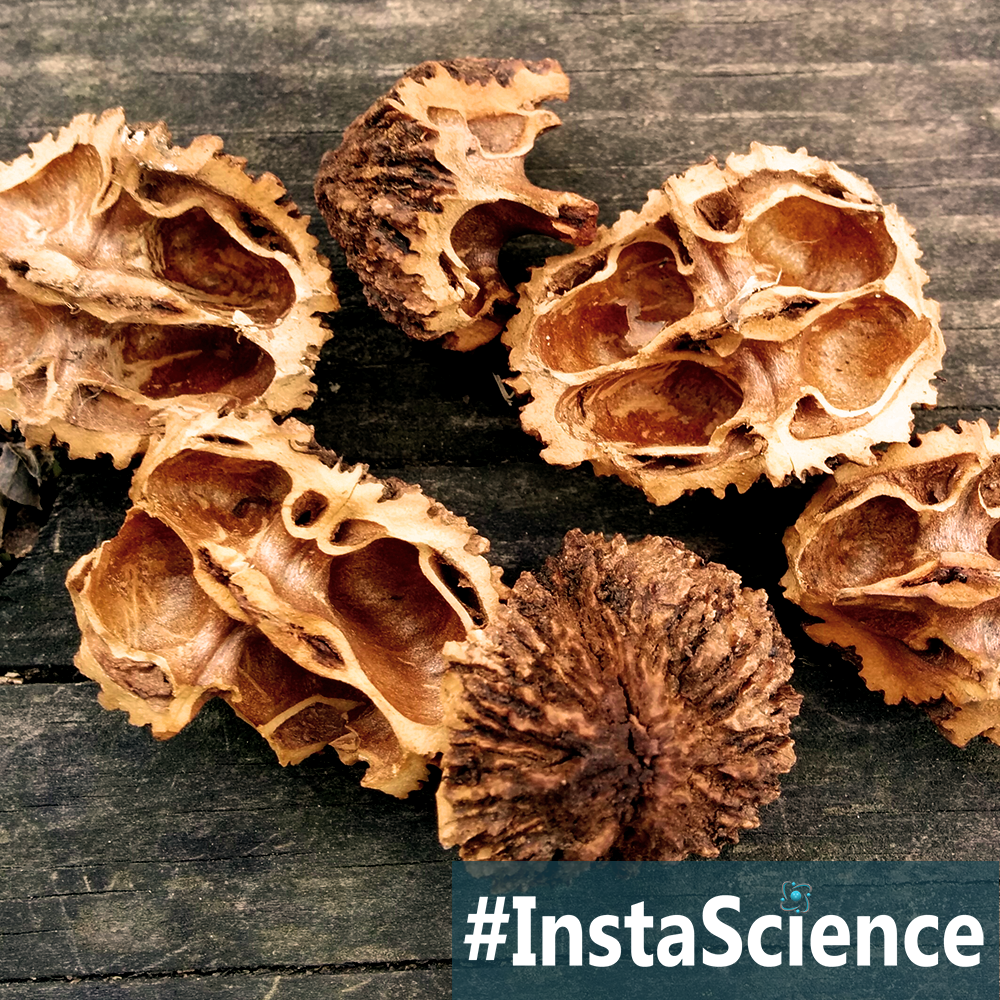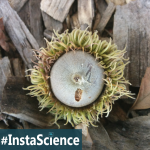
Listen to this InstaScience nature study:
It’s that time of year again – the time when you are afraid to walk under any type of tree that has nuts! Gravity doesn’t help the situation, but the squirrels assist the situation by hurling nuts towards the ground at lightning speeds in an effort to break their tough exteriors and enjoy the yummy goodness inside.
True nuts are dried fruits with a single seed inside. The seed case wall of a nut becomes very hard at maturity, but inside the seed is packed with oils to help fatten up animals for the winter months. This case protects the soft seed, or meat, inside.
Some nuts grow on trees, like pecans; others like hazelnuts, grow on large bushes. Most nut trees and bushes take three years or longer to mature and begin to produce nuts.
There are lots of seeds that we call nuts that are not actually true nuts. Walnuts and cashews are drupes, with two seeds inside. Peanuts are actually legumes. Brazil nuts have multiple seeds encased in a capsule or pod that splits apart.
Fun Fact – Acorns are actually considered true nuts.
Questions to ask your students
- What is one thing you learned about nuts?
- What makes a true nut?
- What is one example of a true nut?
- Are walnuts (cashews, peanuts, or brazil nuts) true nuts?
Related Science Activities
Keep the nut-learning going with these activities!
- Nature Journal Sheet – Have your students make a journal sheet for nuts. You can use this free InstaScience Nature Journal Printable or create your own!
- Dissection – Choose one or more of the nuts you have collected to dissect. Follow the directions found in this post on dissecting acorns.
InstaScience Research Sources
Learn more about nuts in the following articles that we used in our research.





Join the Community!